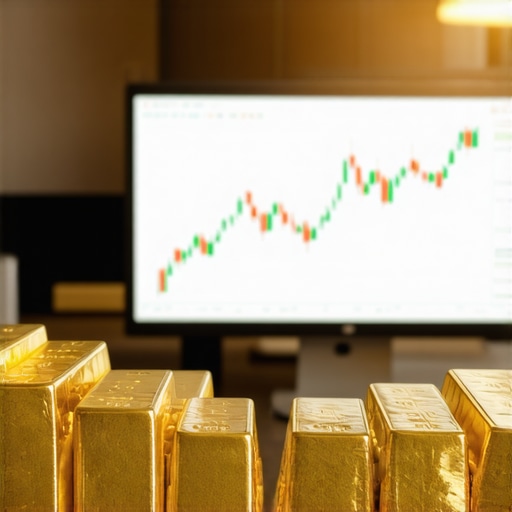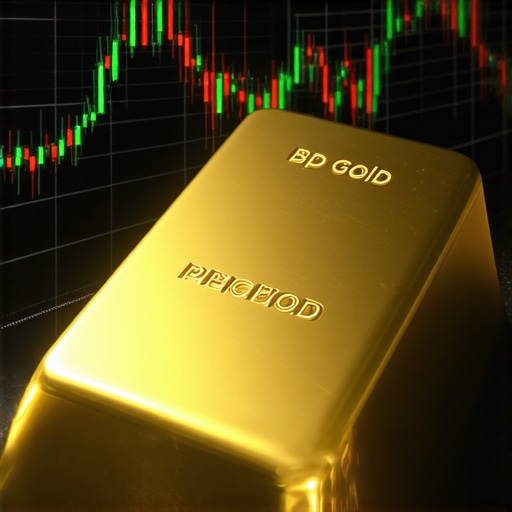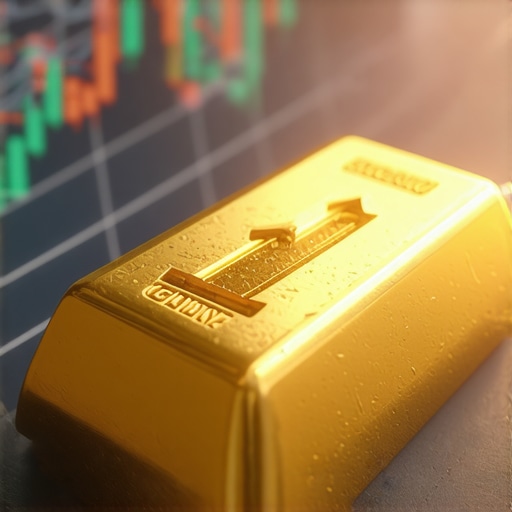Introduction to Gold Pricing Dynamics
The gold market is a complex environment shaped by numerous factors that influence its price. Understanding these influences is crucial for investors, traders, and anyone with an interest in gold as an asset. As we look ahead to 2025, several key trends are emerging that could significantly affect gold prices. This article delves into the primary factors driving gold price movements and offers insights into how they may evolve in the near future.
Key Factors Impacting Gold Prices
Gold prices are primarily influenced by supply and demand dynamics, geopolitical events, and economic indicators. Let’s explore these elements in greater detail.
Supply and Demand Dynamics
At its core, the price of gold is driven by the balance of supply and demand in the market. The demand for gold stems from various sectors, including jewelry, technology, and investment. In 2025, it is anticipated that demand for gold will continue to rise, particularly in developing economies where middle-class growth is fueling jewelry purchases. Additionally, investment demand remains strong, as many investors turn to gold as a hedge against inflation and currency fluctuations. To understand more about the current trends in gold demand, check out our article on Understanding Gold Demand Trends: Insights for Investors.
Geopolitical Events and Their Impacts
Geopolitical tensions can dramatically impact gold prices. Events such as wars, trade disputes, and political instability often lead investors to seek the safety of gold, driving prices upwards. As we approach 2025, ongoing tensions in various regions, including the Middle East and Eastern Europe, could lead to increased demand for gold as a safe-haven asset. For a closer look at how geopolitical factors influence gold prices, refer to our post on Analyzing the Impact of Central Bank Gold Purchases.
Economic Indicators and Their Role
Economic indicators such as interest rates, inflation, and currency strength also play a significant role in determining gold prices. Typically, lower interest rates make gold more attractive, as the opportunity cost of holding it decreases. Conversely, rising interest rates can lead to a decline in gold prices. As we monitor economic forecasts for 2025, it’s essential to keep an eye on how these indicators fluctuate. For insights on economic trends and their implications for gold investment, check out our article on Gold Price Analysis: Key Factors Influencing Trends.
The Future of Gold Pricing in 2025
Looking ahead, the interactions between these factors will shape the future of gold prices. Investors will need to stay informed about both macroeconomic trends and regional developments that may impact supply and demand. By understanding these influences, you can better position your investment strategy to capitalize on potential opportunities in the gold market.
Investor Sentiment and Market Psychology
Investor sentiment is another crucial factor influencing gold prices. The psychology of investors can drive demand for gold, particularly during times of uncertainty. As fear and uncertainty rise in the market, investors often flock to gold, viewing it as a safe asset. This behavior can create a self-fulfilling prophecy; as more investors buy gold, prices rise, attracting even more buyers. Understanding the dynamics of investor sentiment can enhance your investment strategy. For insights into how market psychology affects trading, read our article on Gold Trading Strategies to Optimize Your Portfolio.
The Role of Central Banks
Central banks play a significant role in the gold market as well. Their decisions regarding gold purchases or sales can have profound effects on prices. In recent years, many central banks have increased their gold reserves, viewing the metal as a hedge against potential economic instability. This trend is expected to continue into 2025, as central banks diversify their reserves amid global economic uncertainties. To learn more about the implications of central bank actions, see our post on Understanding Central Bank Gold Purchases: What It Means.
Technological Advances and Gold Trading
As technology evolves, so does the landscape of gold trading. The rise of digital platforms and online trading has made it easier for investors to buy and sell gold. This accessibility has led to increased participation in the gold market, which can influence price volatility. Furthermore, innovations in trading technology, such as advanced algorithms and machine learning, are changing the way traders approach gold investments. For a deeper dive into effective trading techniques, check out our guide on Effective Gold Trading Techniques for Maximum Profits.
Global Economic Conditions
Global economic conditions, including recessions and recoveries, also dictate gold prices. In times of economic downturn, gold prices typically rise as investors seek safe-haven assets. Conversely, during economic booms, gold may see less demand as investors opt for riskier assets with higher potential returns. As we approach 2025, keep an eye on global economic indicators that could signal shifts in gold demand. For comprehensive market analysis and forecasts, revisit our article on Gold Price Forecast 2025: What to Expect This Year.
Global Events and Their Influence
Lastly, global events such as pandemics, natural disasters, and significant political changes can create sudden shifts in demand for gold. The COVID-19 pandemic, for instance, drastically altered market dynamics and increased gold prices as investors sought security. As we head into 2025, it is essential to remain aware of such events and their potential impact on gold prices. Understanding these influences can help investors anticipate changes and adjust their strategies accordingly. For insights on the future of gold demand, explore our post on The Future of Gold Demand: What’s Next for Investors.
Economic Policies and Their Influence on Gold Prices
As we navigate through 2025, the role of economic policies in shaping gold prices cannot be understated. Governmental decisions regarding fiscal policy, trade agreements, and regulatory measures can have profound impacts on the gold market. Investors should remain vigilant about the implications of these policies on gold investments. For an in-depth analysis of how economic indicators affect gold, explore our piece on Gold Price Analysis: Key Factors Influencing Trends.
Interest Rates and Inflation: A Delicate Balance
Interest rates and inflation are two critical components of economic policy that directly influence gold prices. Generally, lower interest rates reduce the opportunity cost of holding gold, making it more attractive to investors. Conversely, higher interest rates can dampen gold demand. Additionally, inflation often drives investors towards gold as a hedge. As inflation rates fluctuate, understanding the interplay between these economic factors is crucial for predicting gold price movements. For strategies on navigating inflationary pressures, consider our guide on Essential Gold Trading Techniques for Effective Results.
Trade Policies and Their Ripple Effects
Trade policies, such as tariffs and trade agreements, can influence gold prices by affecting global economic conditions. For example, trade tensions between major economies can create uncertainty, leading investors to seek safe-haven assets like gold. Monitoring changes in trade policies and their potential impacts on gold demand will be essential in 2025. To better understand the relationship between economic conditions and gold, check out our article on Gold Market Analysis: Current Trends and Insights.
The Role of Global Market Sentiment in Gold Pricing
Market sentiment plays a pivotal role in the pricing of gold. Investor perceptions, driven by news, economic reports, and geopolitical events, can lead to fluctuations in gold prices. As 2025 unfolds, being attuned to market sentiment can provide insights into potential price movements. For effective strategies to optimize your investments based on market trends, refer to our article on Gold Trading Strategies to Optimize Your Portfolio.
Consumer Behavior and Gold Demand
The demand for gold is also significantly influenced by consumer behavior, particularly in emerging markets where gold is a symbol of wealth and status. As economic conditions evolve, so too does consumer spending on gold-related products. In 2025, observing shifts in consumer preferences will be vital for understanding gold price trends. For insights into how consumer demand shapes gold markets, read our post on Understanding Gold Demand Trends: Insights for Investors.
Technological Innovations in Gold Trading
Technological advancements are transforming the gold trading landscape. From online trading platforms to blockchain technology, these innovations enhance accessibility and efficiency in gold transactions. As more investors enter the gold market, the impact of technological changes on price volatility becomes increasingly relevant. To learn more about effective trading techniques in this modern landscape, check out our guide on Effective Gold Trading Techniques for Maximum Profits.
Conclusion: Preparing for Changes Ahead
As we look into the future, the confluence of economic policies, market sentiment, and technological advancements will shape the gold market dynamics in 2025. Staying informed about these trends will not only help investors navigate the potential shifts in gold prices but also position them for success in the evolving landscape of gold investments.
Investment Strategies for Gold in 2025
As we enter 2025, investors must adopt informed strategies to navigate the evolving gold market effectively. Understanding market dynamics and adjusting investment approaches will be crucial in capitalizing on gold price fluctuations. One effective strategy is diversification across various gold investment avenues. By considering options like gold ETFs, physical gold, and gold mining stocks, investors can mitigate risks and maximize returns. To explore more about choosing the right investment types, check out our article on Best Types of Gold Investments to Consider in 2025.
Physical Gold vs. Gold ETFs: Making the Right Choice
When considering gold investments, one of the pivotal decisions is choosing between physical gold and gold ETFs. Physical gold, such as coins and bars, offers tangible value and can serve as a direct hedge against inflation. On the other hand, gold ETFs provide liquidity and ease of trading, appealing to modern investors seeking quick access to their investments. For a detailed analysis of the pros and cons of each investment type, refer to our post on Physical Gold vs. Gold ETFs: Which is Better?.
The Importance of Staying Informed
Staying updated on global economic news and trends will greatly influence your gold investment strategy. Monitoring changes in macroeconomic indicators, such as inflation rates and interest rates, can provide insights into potential gold price movements. Additionally, being aware of geopolitical events can help investors anticipate shifts in gold demand. For more on how to evaluate these economic factors, don’t miss our article on Gold Price Analysis: Key Factors Influencing Trends.
Anticipating Market Volatility
Market volatility is an inherent aspect of investing in gold. Understanding the factors that lead to price fluctuations can help investors make more informed decisions. For example, during periods of economic uncertainty, gold often witnesses a surge in demand as investors seek safety. Developing strategies to navigate this volatility can enhance your investment outcomes. To learn more about effective techniques for optimizing your gold trading, explore our guide on Gold Trading Strategies to Optimize Your Portfolio.
Conclusion: Preparing for the Future of Gold Investments
The landscape of gold investing is set to evolve significantly as we move through 2025. By understanding the underlying factors influencing gold prices, adopting diverse investment strategies, and staying informed about market developments, investors can position themselves for success. The interplay of supply and demand, economic policies, and market sentiment will ultimately dictate the path gold prices take. For continuous insights into gold investment strategies and market analysis, keep following our updates.
Frequently Asked Questions About Gold Prices
What factors influence the price of gold?
The price of gold is influenced by various factors, including supply and demand dynamics, geopolitical events, economic indicators, and investor sentiment. Understanding these factors can help investors make informed decisions about gold investments.
How do economic indicators affect gold prices?
Economic indicators such as interest rates, inflation, and currency strength play a significant role in gold pricing. Typically, lower interest rates and higher inflation tend to drive gold prices up, as investors seek gold as a hedge against economic instability.
What is the relationship between gold and inflation?
Gold is often viewed as a hedge against inflation. When inflation rates increase, the purchasing power of currency decreases, leading investors to turn to gold as a secure store of value, which can result in higher gold prices.
Are gold ETFs a good investment?
Gold ETFs can be a good investment for those seeking liquidity and ease of trading. They provide exposure to gold without the need for physical storage, making them an attractive option for modern investors looking to diversify their portfolios.
How does geopolitical uncertainty impact gold prices?
Geopolitical uncertainty typically drives investors to seek safe-haven assets like gold. Events such as wars, political instability, and trade disputes can lead to increased demand for gold, pushing prices higher as investors look for security.
What role do central banks play in gold pricing?
Central banks hold significant gold reserves and their buying or selling actions can impact gold prices. Many central banks have been increasing their gold holdings as a hedge against economic instability, which can lead to upward price pressures.
How can I predict future gold prices?
Predicting future gold prices involves analyzing a combination of factors, including economic indicators, geopolitical events, investor sentiment, and market trends. Staying informed and monitoring these elements can provide insights into potential price movements.
What are some strategies for investing in gold?
Effective strategies for investing in gold include diversification across various investment types such as physical gold, gold ETFs, and gold mining stocks. Additionally, staying updated on market trends and economic conditions can enhance investment outcomes.
What should I know about trading gold in volatile markets?
When trading gold in volatile markets, it’s essential to remain aware of the factors driving volatility, such as economic reports and geopolitical events. Developing a trading strategy that includes risk management and market analysis can help optimize trading outcomes.
Where can I find reliable information on gold investments?
Reliable information on gold investments can be found through trusted financial news websites, investment analysis platforms, and resources from financial experts. Regularly reading market reports and articles can help investors stay informed about trends and insights.
Authority Resources for Gold Investments
For investors seeking reliable information and expert insights on gold pricing and investment strategies, consider exploring the following resources:
- World Gold Council – A leading authority on gold, providing research, insights, and market trends.
- Investopedia – A comprehensive financial education platform that covers gold investing strategies and market analysis.
- BullionVault – An online platform for buying and storing physical gold, offering market updates and investment advice.
- Kitco News – A trusted source for news, analysis, and real-time prices of gold and other precious metals.
- Federal Reserve – Provides economic data and insights that influence gold prices and investment strategies.
Conclusion: Positioning for the Future of Gold Investments
As we approach 2025, the landscape of gold pricing will be shaped by a multitude of factors, including economic policies, market sentiment, and technological advancements. By understanding these influences and adopting informed investment strategies, investors can better navigate the dynamic gold market. Staying updated on global trends and leveraging authoritative resources will empower investors to make strategic decisions in the evolving gold investment environment.











This post offers a well-rounded overview of the various factors shaping gold price movements as we head into 2025. From my experience investing in gold ETFs, I’ve noticed that market sentiment and geopolitical tensions often have more immediate impacts on prices than the economic indicators alone might suggest. The article’s point about central banks increasing their gold reserves really resonates, especially considering how much uncertainty there still is globally. I also appreciate the mention of technological innovation in trading, as platforms with algorithmic tools have become indispensable for making timely decisions. It’s interesting to see how different investment strategies like physical gold versus ETFs come with their own trade-offs between liquidity and tangible security. Monitoring inflation and interest rates remains key in my portfolio management. Overall, staying informed on these diverse influences is crucial — oversimplifying gold pricing just isn’t practical given these overlapping drivers. This post successfully highlights the complexity while providing accessible insights for investors.